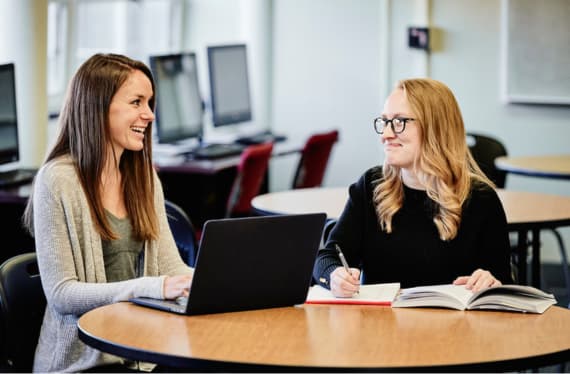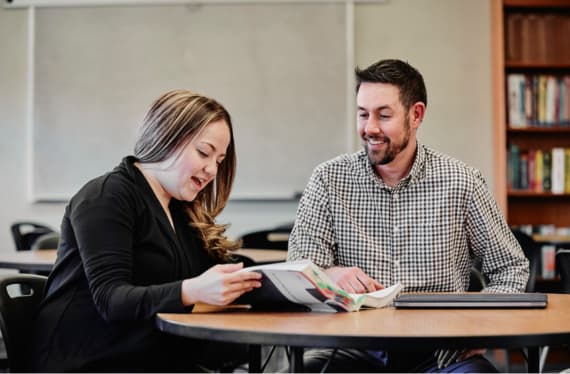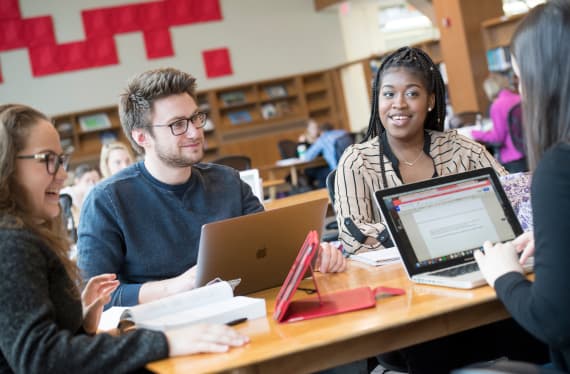Special education plays a crucial role in ensuring that every child—regardless of their individual abilities—has the opportunity to be a successful student. According to the National Center of Education, approximately 15 percent, or 7.2 million, of all public school students between the ages of three and 21 received special education services during the 2020–2021 academic year.
With the rising prevalence of special education in today’s world, it’s important to understand its role in ensuring a more equitable education landscape.
Here’s an overview of the fundamentals of special education, important trends to consider, and what special education looks like in classrooms today.
What is special education?
According to the Individuals with Disabilities Education Act (IDEA), special education is a specialized instructional program designed to cater to the unique needs of children with learning differences. This program is provided at no cost to parents and ensures every child receives an appropriate education that meets their specific learning needs.
According to Priscilla Boerger, the program director of Regis College's Master's in Teaching Special Education, “special education encompasses a wide range of educational learning challenges that students may encounter in the classroom.” As a result, it often extends beyond conventional instruction, leveraging specific strategies to meet the diverse learning challenges of students struggling with their current classroom instruction.
“I think it’s important to note, though, that we all have learning differences,” Boerger continues. “Special education programs are meant to serve a population of students who need extra support.”
Since these programs are designed to cater to a distinct population of students, acknowledging and addressing these differences ensures that students with learning challenges have equal access to quality education and obtain the necessary tools to succeed.
Modern Trends in Special Education
While the education landscape is going through several shifts, there are notable trends in special education that reflect an evolving understanding for students with diverse learning needs.
According to Boerger, one positive trend is the improved preparedness of both special education and general classroom educators. With advancements in industry knowledge, training, and resources, educators are better equipped to meet the unique needs of students with learning differences.
Boerger has also noticed an increasing recognition of the importance of parental involvement and partnership in the education process. “A lot of times, teachers don't realize that parents aren’t scary people,” Boerger explains. “They can actually be helpful because they really know their kids.”
Another significant trend in special education is how fast children are assessed and categorized as needing special education. In many instances, “we're seeing a specific population of students being labeled as students with learning differences, when in reality it’s often a language barrier,” says Boerger.
This issue is particularly relevant due to the rapid growth of English Language Learners (ELLs) in grades K-12, according to the National Education Association (NEA). With a steadily growing group of students who need additional resources outside of the classroom, these kids are often supported through special education services. “So I think we're quick to put that label on students sometimes,” Boerger continues.
While adopting a culturally responsive approach is one way educators can ensure equitable education, there is still a long road ahead in reconciling this negative trend. “Not everyone is coming from the same background,” Boerger says. “So I think all of this is going to be key to how we move forward in education.”
Four Examples of Special Education in the Classroom
Special education plays a vital role in classroom inclusion by providing support and interventions for students with moderate learning challenges. “When classroom teachers see a child consistently struggling, and the strategies they’ve implemented aren’t making a difference, they start to look to guidance counselors for support and next steps,” Boerger says.
In cases where a moderate learning challenge is identified—which are learning differences that can be addressed in the classroom—special education measures can be implemented to ensure the student receives the support they need to succeed both academically and emotionally.
This support often comes from a special education teacher working closely with classroom teachers to design and implement appropriate instructional strategies, accommodations, and modifications that cater to the unique needs of each student.
Here are some common moderate learning differences special education teachers see in classrooms today.
1. Mild to Moderate Behavioral Issues
Mild to moderate behavioral issues in special education refer to challenging behaviors that fall within a certain range of intensity and frequency. These behaviors may manifest as difficulties in self-regulation, impulsivity, attention deficits, or defiance.
Students with these issues may exhibit behaviors such as:
- Classroom disruptions or off-task behaviors: Talking out of turn, as well as excessive chatting, interrupting, making noise, or engaging in distracting activities
- Noncompliance: Refusing to follow instructions or comply with classroom rules
- Impulsivity and hyperactivity: Difficulties staying seated, remaining focused for extended periods, or controlling their impulses
- Social interaction challenges: Struggles with taking turns, sharing, cooperating, or maintaining appropriate personal space
- Emotional regulation issues: Difficulties managing emotions, which often leads to frequent outbursts, frustration, anger, or withdrawal
In all of these instances, mild to moderate behavior issues often result in classroom disruptions that can impede on other students’ learning. Special education services are aimed to address these behavioral issues by implementing evidence-based strategies and interventions to promote positive behavior and social-emotional development.
Some examples of behavior management techniques include:
- Social skills training
- Individualized behavior plans (IEPs)
- Supportive learning environments
In the end, the goal is to provide students with the necessary tools and strategies to manage their behavior effectively in a way that will not derail general classroom instruction.
2. Content-Area Struggles
Content-area struggles in special education refer to the challenges students face in specific subject areas that go beyond traditional academic support. These struggles can vary depending on the severity of the challenge and the individual student's learning profile.
Common content-area struggles in special education often revolve around difficulties in reading, writing, and math—with dyslexia being a prominent cause. Dyslexia is a specific learning challenge that primarily affects reading and language processing, which makes it difficult for students to decode words, recognize sight words, and comprehend written text.
Special education programs for students with dyslexia often employ evidence-based approaches such as:
- Structured literacy instruction
- Multisensory techniques
- Systematic phonics instruction
Special education programs also try to incorporate adapted materials, graphic organizers, simplified language, and hands-on activities to help enable them to actively participate in academic discussions and assignments.
3. Speech Impairments
Speech impairments play a significant role in special education as they impact a student's ability to communicate effectively and participate in the classroom.
Speech impairments encompass a range of conditions, including:
- Articulation disorders
- Phonological disorders
- Fluency disorders (such as stuttering)
- Voice disorders
In special education, addressing speech impairments requires a collaboration between speech-language pathologists (SLPs) who work closely with students outside of school, classroom teachers, and special education professionals. While SLPs assess and diagnose speech impairments and develop treatment plans, special education teachers must find ways to implement these strategies into the student’s IEP.
By addressing speech impairments, special education aims to enhance a student's communication skills, promote social interactions, and support academic success. By allowing students to express themselves more effectively, they can develop more meaningful relationships with peers and teachers both in and outside of the classroom.
4. Mild to Moderate Physical Impairments
Mild to moderate physical impairments are a significant aspect of special education since they can greatly impact a student's mobility, fine motor skills, coordination, and physical strength.
Some of these physical impairments may include conditions such as:
- Cerebral palsy
- Muscular dystrophy
- Spina bifida
- Other orthopedic impairments
While these students often face challenges in participating in physical activities, special education teachers collaborate with physical and occupational therapists to create IEPs that address these common obstacles. The IEP may include accommodations and modifications to the physical environment, assistive technology, adaptive equipment, and specialized instruction to promote independence and access to educational opportunities.
By addressing the specific needs of students with physical impairments, special education programs aim to create inclusive learning environments that promote academic growth, social participation, and overall well-being.
Start Taking an Active Role in Special Education
Access is a critical factor in ensuring the success of special education. “We want to be equitable with all of our students and give each of them the same opportunity and access as everyone else,” Boerger explains. “I think sometimes—particularly in low socioeconomic areas where kids are living on or close to the poverty line—the access to this type of education is minimal.”
While tackling this problem can be challenging, becoming an educator with a master’s in teaching special education is one way you can help bridge the gap in education accessibility. By pursuing an advanced degree and becoming a special education teacher, you can gain a deeper understanding of diverse learning needs, evidence-based instructional strategies, and effective interventions so you can implement inclusive practices for a more equitable and accessible classroom.
Ready to take the next steps in your special education teaching career? To learn more.




